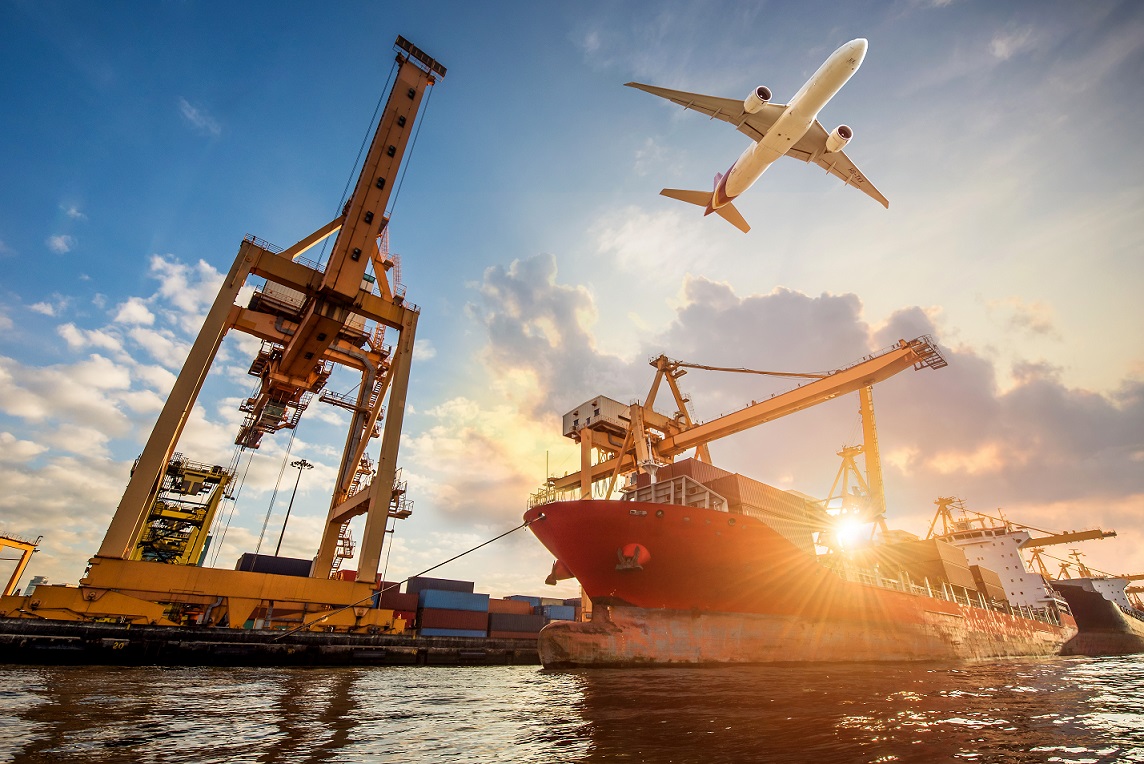What’s driving Asia-Europe trade?
06 / 03 / 2024

Source: Shutterstock
E-commerce is proving key for Asia-Europe trade, even as the Red Sea – Suez Canal shipping crisis throws up near-term opportunities.
Trade flows have been sent into chaos amidst the outbreak of global conflict. Attacks against international shipping in the Red Sea is just the latest conflagration to have forced a rethink in the minds of logistics managers, particularly when it comes to the Asia-Europe trade lane.
The wave of drone and missile strikes conducted by Iranian-backed, Yemen-based Houthi rebels have been particularly vexing for ocean liners. With little to no sign that the attacks will stop anytime soon, and a seeming failure of the joint US-UK Operation Prosperity Guardian to offer reassurances for vessel operators sending their fleets via the Suez Canal, many have reluctantly opted to reroute ships around Africa’s Cape of Good Hope, adding not only an extra 10-15 days onto journey times, but countless surcharges and costs for shippers.
Already it seems the impact of the decision is being felt in supply chains, with the likes of Tesla, Volvo, and other manufacturers having delayed or even suspended certain operations while they await the arrival of spare parts.
Announcing the news, a Tesla spokesperson told reporters: “Armed conflicts in the Red Sea and the associated shifts in transport routes between Europe and Asia via the Cape of Good Hope are having an impact on production in Grünheide. Considerably longer transportation times are creating a gap in supply chains.”
Such conditions are, unsurprisingly, unsustainable, particularly for car manufacturers, which have become dependent on the just-in-time supply flows of the Asia-Europe trade lanes. And yet, the disorder has also highlighted the pivotal role of air cargo on this trade lane, with many now arching their heads to the skies as they seek a clearer path to market.
Jérôme de Ricqlès, maritime expert at Upply, said alternative Asia-Europe routings were “relevant again”, not only by rail but a sea-air combination via Gulf hubs.
“The price differential compared with an all-sea option remains significant, but for deliveries of highly time-sensitive shipments, these solutions will be worth considering if the situation continues,” added de Ricqlès.
Ricqlès’ suspicions have echoed the opinion of a wave of forwarders claiming that the Red Sea crisis has been something of a boon for those with airfreight capacity between Asia and Europe.

Image: Shutterstock
Sea-air opportunities
According to one report, DSV has experienced a 200% growth in its sea-air tonnages on the trade lane. Among others to attest to the validity of this turn to sea-air is Kuehne+Nagel (K+N).
The logistics stalwart has experienced a 30% uptick in the number of enquiries for its combined offering running via Dubai since the onset of the Red Sea attacks. It has been running the service for more than half a decade.
But global head of air logistics products and services at K+N Harsha Ranasinghe tells Air Cargo News (ACN) the effects on the Asia-Europe trade lane generated by the violence on the Red Sea – not to mention the continuing Russia-Ukraine war and the Israeli siege of Gaza – have been multitudinous.
“As carriers re-route container ships via the Cape of Good Hope, we see more customers switch to multimodal transports such as sea-air logistics,” Ranasinghe says. “By shipping containers from Asia into Dubai or Los Angeles and going from there by air, customers have an option that is more economical than pure airfreight and faster than seafreight.”
However, accessing such capacity may prove hard with Ranasinghe noting that the war in Gaza has seen increased pressure placed upon airlines to assist in the transportation of aid and other relief shipments.
Similarly, Kerry Logistics Network (Kerry) also experienced “recently garnered increased interest” its sea-air offerings between Europe and Asia.
According to the logistics operator, the sea-air offering represents a cost saving of 40% on traditional airfreight solutions, while remaining 40% faster than seafreight (Kerry claims that the service takes 16-21 days between China and Europe).
Others have suggested such services are as much as 60% faster than ocean transit times, not to mention emissions savings of circa 30% against pure airfreight journeys.
“In these challenging times for sea shipments between Asia and Europe, it is rewarding to offer our clients alternative and efficient solutions,” says group managing director Vic Cheung. “Our sea-air services showcase our comprehensive global connectivity. As a reliable logistics partner, we are committed to timely deliveries and cost efficiency.”
Of course, all of this is making itself felt in the rates scene, and as if to prove the claim that “when it rains it pours”, the heightening demand for capacity on this trade coincides with the Chinese New Year peak.
At the time of writing, TAC Index was reporting an 8.8% week-on-week increase on airfreight rates out of Shanghai, noting that much of this spike was being driven by major demand for capacity from shippers in Europe, similarly eager to get capacity on both Hong Kong and Southeast Asia services, which reported 5.9% and 10% rate spikes, respectively.
For Lufthansa Cargo, the increase in demand for airfreight capacity on this trade lane has come on the back of the German flag carrier expanding its operations and continuing to grow its regional freighter fleet.
A spokesperson tells ACN that Asia-Europe is now “as important as ever” for Lufthansa; it operates 42 services between Europe and Asian destinations each week. Added to which, the spokesperson says that its long-haul freighter fleet of 17 is only set to grow further still.
“We are well positioned in the market,” they add. “This enables us to steer our network flexibly according to our customers’ needs and geopolitical events. Therefore, we are prepared to adjust our network even on short notice.
“We also continually evaluate and develop our network in the long term to serve our customers in the future with reliable supply chains. Lufthansa Cargo can thus handle increasing numbers of airfreight goods due to conflicts very well.”

Credit: one photo/ Shutterstock
E-commerce demand growth
The carrier, though, has not boosted its services on the back of the Red Sea attacks, nor on the back of the wars in either Eastern Europe or the Middle East, rather this has been a response to ever-increasing demand from the e-commerce sector as volumes catering to the market continue to grow. A reality that Ranasinghe also highlights.
“E-commerce has shown a tremendous growth when demand in other industries has softened,” he says. “As the demand for e-commerce has increased, shippers have looked beyond Hong Kong and Mainland China to find alternative airports for capacity to meet the demand.
“We continue to see capacity constraints for airfreight out of China due to large volumes being used by a few e-commerce giants. How this situation will evolve and to which extent it will impact capacity and rates in the future highly depends on the focus markets and growth strategies of these companies.”
Seeking to tap into this spiking demand, Maersk Air Cargo announced the launch of a trial service at the backend of 2023 linking China and the UK with a weekly service running Bournemouth Airport-Hangzhou Xiaoshan International Airport utilising a Boeing 767-300 freighter with a capacity for some 45 tonnes.
In choosing Bournemouth, the carrier has tapped into something of a cargo zeitgeist at the moment, with the south coast gateway having grown its cargo operations over the course of 2023 in no small part due to heightened demand for slots out of China from the hungry e-commerce crowd.
Initially set to run over the Christmas peak, the Danish shipping giant-come-airfreight operator did not discount the potential for its expansion should strong volume demand hold. As the first month of the year reached its end, demand was holding, with one report claiming that Chinese fast-fashion brands were driving a new boom in China-Europe trade.
Commenting, Lufthansa’s spokesperson says: “The importance of the e-commerce business [for airfreight keeps growing], not only in the Asian market, with Lufthansa having just extended its road feeder services in Europe as, together with our subsidiary heyworld and its focus on e-commerce, we look to support our customers with individual solutions to enable their participation in this growing business branch. Moreover, the positive feedback in the Asian market for our new products proves that we are on the right track.”
Given that some of the growth on this trade lane is attributable to a series of volatile geo-political events – and we haven’t even discussed the simmering China-US trade war – Ranasinghe says that it will be “important to keep an eye on the situation on the Red Sea moving forward”, noting that without any sort of normalisation in the coming weeks there would likely be “additional knock-on effects due to longer transit times and a shortage of containers coming back to Asia… shippers need to be in close alignment with their logistics providers and plan ahead”.
Lufthansa’s spokesperson concurs with the concerns around airfreight, which they describe as a “volatile business with challenges such as dynamic market development, geopolitical events, unforeseen crises or new political regulations”.
Asked for their own assessment on the challenges facing airfreight operators running Asia-Europe services are when it comes to 2024, they note that “sustainability, digitisation and talent acquisition will remain important topics in the coming year”, before adding, “we tackle this range of topics aiming at resilient and flexible supply chains for our customers”.













